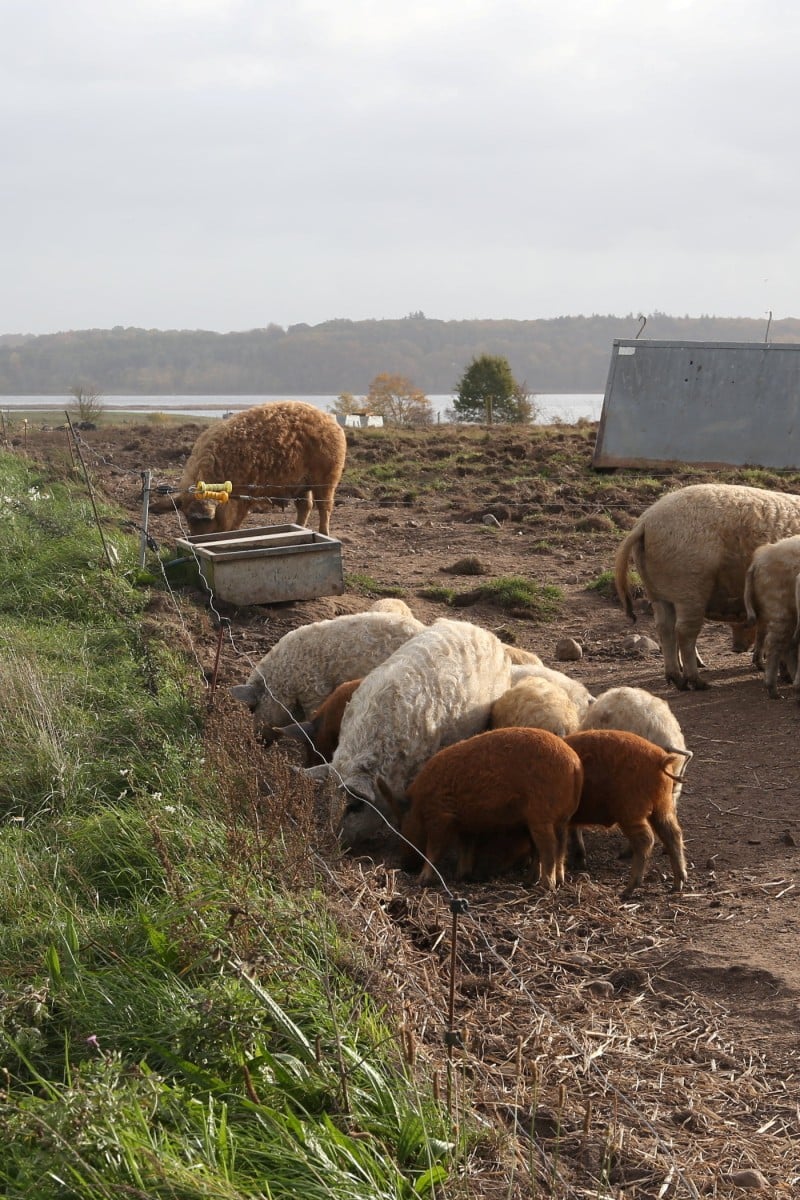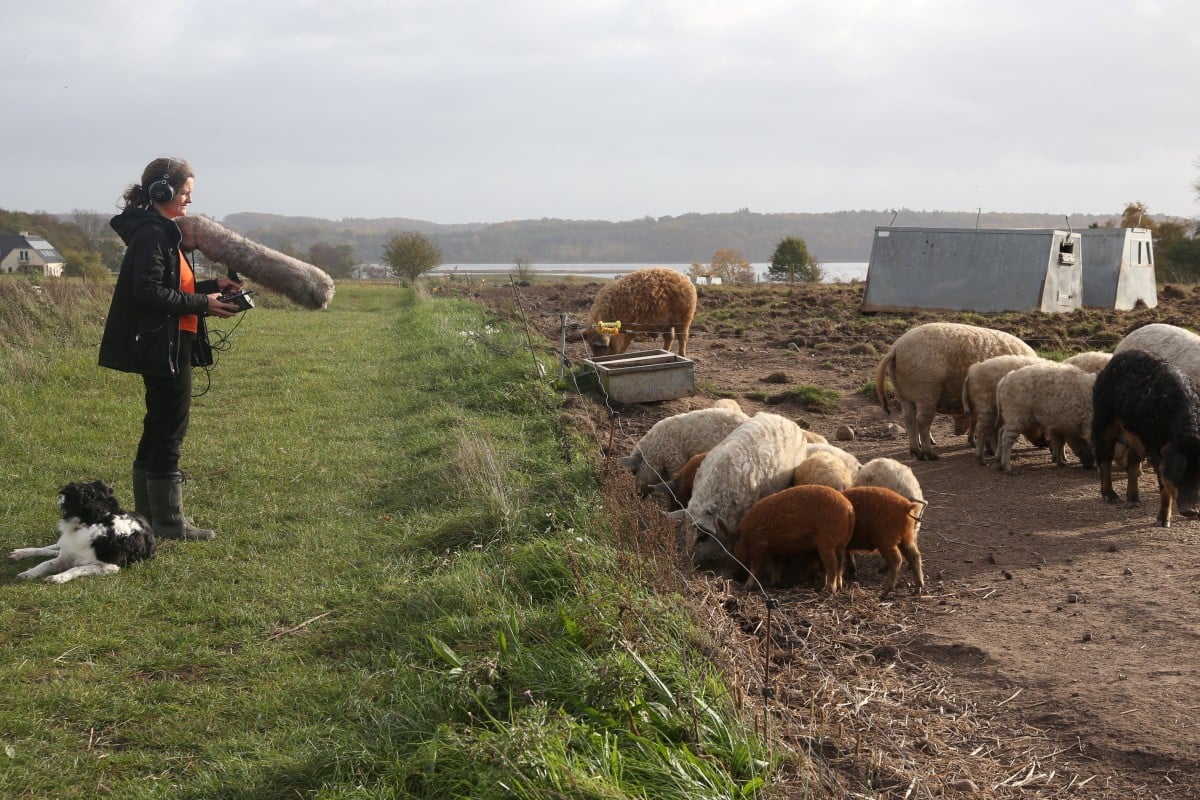
Spark Study Buddy (Challenger): AI algorithm matches pig sounds to their emotions
The story on this page has some tougher vocabulary words and questions to improve your understanding and English grammar.
 Elodie Mandel-Briefer, a behavioural biologist at the University of Copenhagen, demonstrates how she records pigs’ calls to analyse later on a farm in Denmark. Photo: Reuters
Elodie Mandel-Briefer, a behavioural biologist at the University of Copenhagen, demonstrates how she records pigs’ calls to analyse later on a farm in Denmark. Photo: ReutersContent provided by British Council
[1] European scientists have developed an artificial intelligence (AI) algorithm capable of interpreting pig sounds to create a tool to help farmers improve animal welfare.
[2] According to Elodie Mandel-Briefer, a behavioural biologist at Denmark’s University of Copenhagen who is co-leading the study, the algorithm could potentially alert farmers of pigs’ negative emotions, thereby improving the animals’ well-being.
[3] The scientists involved come from universities across Denmark, Germany, Switzerland, France, Norway and the Czech Republic. They used thousands of recorded pig sounds in different scenarios – including play, isolation and competition for food – to find grunts, oinks, and squeals that reveal positive or negative emotions.
[4] While many farmers already have a good understanding of their animals’ well-being by watching them in the pig pen, existing tools mostly measure their physical condition, said Mandel-Briefer. “Emotions of animals are central to their welfare, but we don’t measure it much on farms,” she said.
[5] The algorithm showed that pigs kept in outdoor, free-range or organic farms with the ability to roam and dig in the dirt produced fewer stress calls than conventionally raised pigs. The researchers believe that this method, once fully developed, could also be used to label farms, helping consumers make informed choices. “Once we have the tool working, farmers can have an app on their phone that can translate what their pigs are saying in terms of emotions,” Mandel-Briefer said.
[6] Short grunts typically indicate positive emotions, while long grunts often signal discomfort, such as when pigs push each other by the trough. High-frequency sounds like screams or squeals usually mean the pigs are stressed, for instance, when they are in pain, fighting or separated from each other.
[7] These findings were used to create an algorithm that employs AI. “Artificial intelligence really helps us to both process the huge amount of sounds that we get, but also to classify them automatically,” Mandel-Briefer said.
Source: Reuters, October 25
Questions
1. What can the algorithm help farmers do, according to paragraph 2?
______________________________________________________________________________________________________
2. According to paragraph 3, the scientists developed the algorithm using …
A. photographs of pigs.
B. recorded pig sounds.
C. interviews with pig farmers.
D. observations of pig behaviour.
3. According to paragraph 4, why should we measure animal emotions?
A. to understand their physical health
B. to train them better
C. to understand their emotional well-being
D. all of the above
4. Which pigs mentioned in paragraph 5 were the least stressed?______________________________________________________________________________________________________
5. What sounds do happy pigs make, according to paragraph 6?
___________________________________________________
6. Based on the sentences provided below, write a question starting with how, why, or where. (3 marks)
(i) They wanted to help farmers improve the well-being of their animals.
Question:
___________________________________________________
(i) Pigs show they are unhappy through long grunts, high-frequency screams and squeals.
Question:
___________________________________________________
(iii) They collected the pig sounds from different places, including farms.
Question:
___________________________________________________
Answers
1. It can alert farmers of pigs’ emotions, thereby improving the animals’ well-being.
2. B
3. C
4. The pigs kept in outdoor, free-range or organic farms with the ability to roam and dig in the dirt.
5. short grunts
6. (accept all reasonable answers)
(i) Why did scientists develop the AI-employed algorithm?;
(ii) How do pigs show they are unhappy?;
(iii) Where did the scientists collect the pig sounds?
